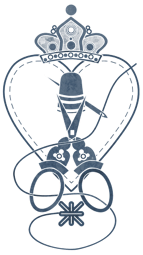Personal Lessons
My World of Needlework
Do I love the four photos I posted in Lesson 6 A?
No. I think they make some good points, but love them?
No.
Do I think they are the most beautiful?
If you would like to see the paintings of the women I think are most beautiful, scroll down.





I have borrowed a painting from my favorites of yesterday and added Sarah and three cameos, a total of
5 images.
See any similarities in the first four?
Notice the high bridge of a nose,
a large straight pronounced nose,
dominant features, a strong chin line in the first five?
But what about the 5th? A change in style?
Does CAMEO #2 make more sense to you now?
Any chance that you begin to see where she fits in the beauty parade? Can you understand a bit more the appeal of strong features representing strong women?
FAvorite Lessons I've Learned
I've told this story before but it is one of my favorites. When I was relatively fledgling collector, I went to a meeting honoring the God of Thimbles who was a bowler-hat-wearing Englishman, Edwin Holmes. Quite simply he knew more about thimbles than anyone else. He traveled extensively on business and when he was in places with thimble collections in museums, he visited the thimbles and corrected all the mislabelings. He was amazing.
At the meeting where I first met him, each collector was encouraged to show him a thimble and ask a question. I had a thimble that puzzled me, I didn't know whether it was American or Continental, so I asked. He looked at it less that 10 seconds and said 'German.' I asked, 'how do you know? And he answered, 'because I've seen probably 1800 just like it.'
Later during that meeting I heard him say for the first of many times, 'a good collector doesn't need marks to tell him/her about the thimble, the style of the thimble tells it all.'
Style helps with nearly everything: I bought some lace recently. The dealer told me it was mid-18th century. I had already guessed this because the style of 18th century lace is very distinct, be it bobbin or needle. While identification isn't quite that simple (there are revival pieces, redoctored pieces, mixed style, novel style, etc) as a general guide the study of style is most helpful.
Style certainly helps with cameos. When I first saw my Diana cameo (#2 Cameo), I guess by the style of her face that she was likely a Victorian cameo; the same was true or my Night and Day cameo. If you look at the painting at the top of this page, you might notice it has the same facial characteristics, as does the painting of Sarah Bernhardt. The style of beauty, like almost everything evolves in time, so the high bridge, the straight nose, the dominant strong features, and prominent square sometimes fleshy chin so characteristic of Victorian beauty, yielded in time to the dainty features, pert nose turned-up nose and small chin of the 1950'.
It is always said that the English make such wonderful collectors and cataloguers and that is why the British Museum is what it is. A colleague of DH's told a great story of a travel regret. In a bookstore in Tunbridge Wells DH's colleague found a set of 36 leather-bound volumes on British Eggs. Not a birdie on a page, not a non-British egg. Sooo English he said, who else would write 36 volumes on British Eggs.
This story always reminded me of the English God of Thimbles and it still makes me chuckle.
2

Next, in Part II you will meet Miss Beauty-Challenged and her Handmaiden and her Court of Four.
They are all in need of help. As my friend Carolyn told me, the people who carved them need to go back to Cameo Carving School.
Let's see now if we can identify some of their problems and how we migh fix them.
Remember back when I was stitching my Queen Victoria as a Royal Bride? I bought this thimble in part because of its association with Queen Victoria. One of Queen Victoria's husband' great project was the Exhibition of All Nations in 1851 and this thimble is a souvenir of the exhibition.
There were some other reasons too that I am so happy to have it. It is small and so beautifully made that the bright cutting of the silver glistens like stones. In addition, it had been Edwin Holmes' thimble and still has the auction number from the sale of his thimbles on the inside. One of the best most beautifully made thimbles I own.
With this thimble, Part I of FACES is finished.
A favorite cameo of mine from the 1950's. Notice how the style of beauty has changed from the Victorian age.
